The York River in Virginia is relatively short in miles compared to other Chesapeake Bay-area rivers, but what it lacks in miles it more than makes up for in history and beauty. It is only about 34 miles long, compared to the James and Susquehanna Rivers, both of which cover hundreds of miles.
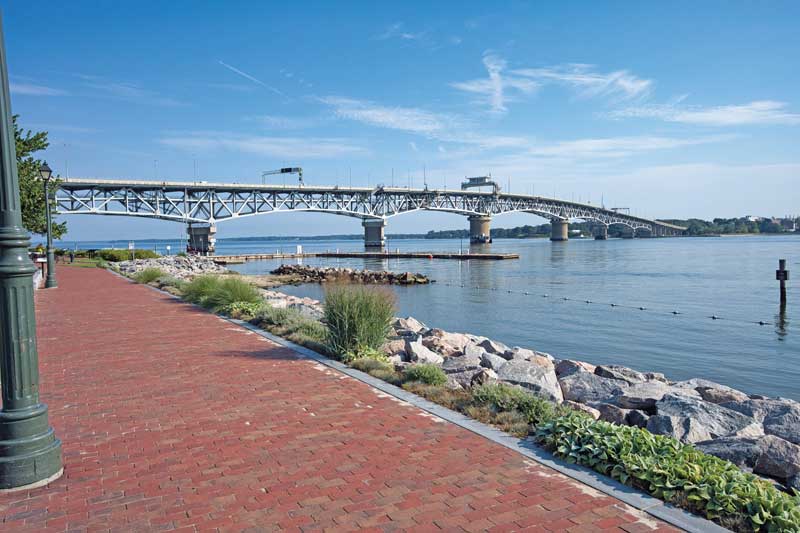
The York starts at the confluence of the Mattaponi and Pamunkey Rivers at West Point. It flows southeast through mostly undeveloped territory. About 10 miles south of West Point you will find York River State Park. At almost 3000 acres, there is plenty to explore. With camping, fishing, boating, and over 40 miles of trails, it is a fantastic place to visit if you like history and nature. The park contains an old tobacco plantation, but it is perhaps best known for its abundance of fossils. Fossils are common on the beaches, and fossil hunters travel from far and wide to have a look. Most of the fossils are shellfish, but shark teeth can also be found. Visitors are allowed to take home one fossil per visit. The park is open daily from 8 a.m. to dusk.
Nearby, on the north shore of the York is the site of Werowocomoco. Archaeologists have determined that this is the location of Chief Powhatan’s eastern village. The famous story of Captain John Smith being saved by Pocahontas took place in this village. Because of its historic importance, the site has been acquired by the National Park Service, but it is not yet open to the public. Another Native American site, further down the river, is now Machicomoco State Park. This is the first state park in Virginia that is designed to honor Virginia’s natives. The park offers a kayak launch and several trails. The 3.1-mile loop trail is easy. Machicomoco is often uncrowded, making it a good place for bird watching.
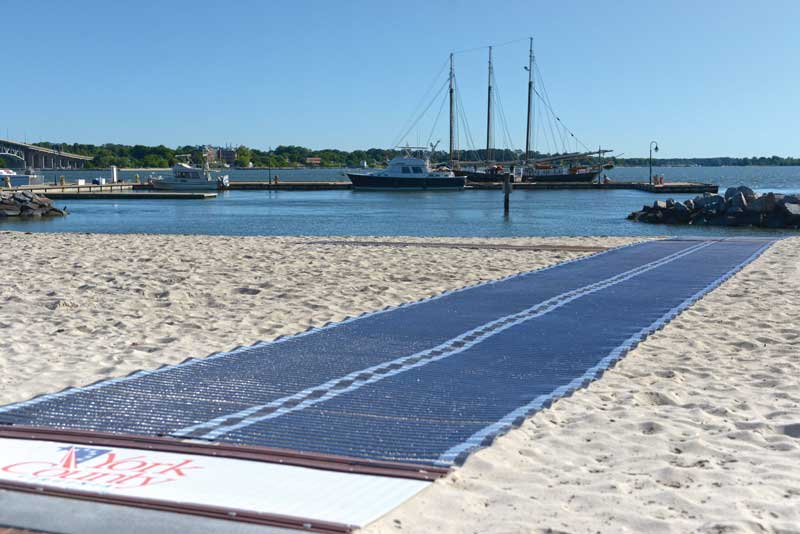
Further down the south shore are military installations. Camp Perry is a CIA training facility. Next is Cheatham Annex (a supply facility) and then the Naval Weapons Station. As its name implies, the weapons station stores weapons for the Navy. When you see a destroyer berthed at the pier, it’s not loading food. These are not open to the public, of course, and are best observed from a distance.
The only bridge crossing the York connects Yorktown to Gloucester Point along Route 17. The bridge has the distinction of being the largest double-swing-span bridge in the United States. Instead of lifting a portion of the bridge to let a tall ship pass, the center swings (rotates) open. The original bridge was just two lanes. In 1995, it was widened to four lanes. The new sections were actually assembled off site, brought in by barge, and placed into position. It was recently announced that the Coleman Bridge would be toll-free moving forward.
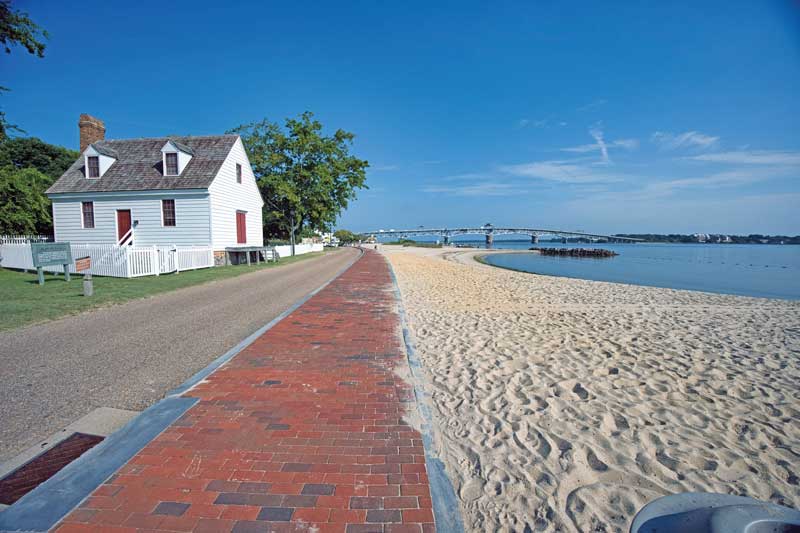
What you can do and see in Yorktown is beyond the scope of this article, but a few things are worth noting. They have a pier for transients visiting by boat, which connects to Riverwalk Landing, a waterfront mall with shops and more. The building, built in 1935 by the National Park Service, was used as a Post Office before being converted into a spot for visitors. Yorktown has a lovely beach that is accessible to the handicapped.
There are opportunities for hiking and paddling, a motel and places to dine, and of course, there is history. This is the location of the last major battle of the Revolutionary War, where the British surrendered. There are two main museums in town, and they can be reached by foot from the waterfront. The Colonial National Historical Park Visitor Center and the American Revolution Museum at Yorktown are worth the short hike. You can also tour the battlefields and see the field where Cornwallis actually surrendered, and where his troops laid down their arms.
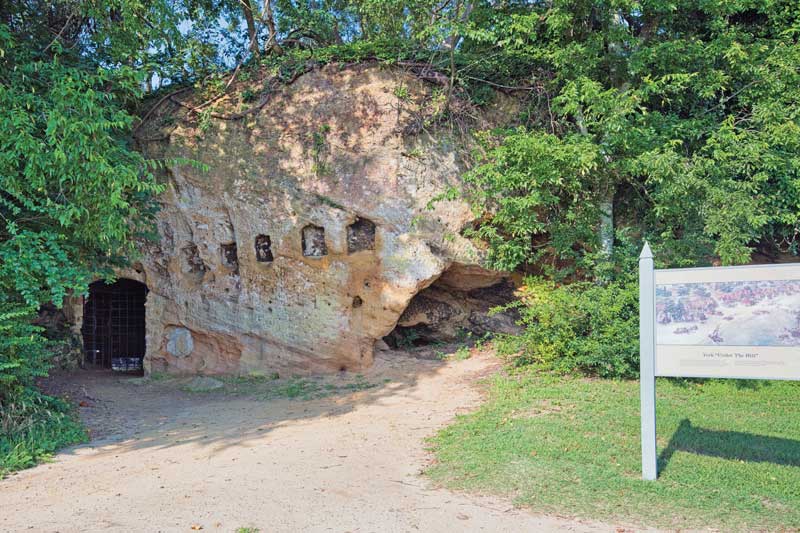
Yorktown boasts many original buildings, including the Nelson House which still has a cannon ball in an exterior wall. If you are traveling by boat, remember that Cornwallis’s fleet, which was scuttled, is on the river bottom off Yorktown. You can’t see them, but you will be passing over these sunken warships as you make your way along the river.
Across the York from Yorktown you will find Gloucester County and a public park. A short walk up the street from the park is the Virginia Institute of Marine Science (VIMS). VIMS has a small but fantastic visitor’s center with aquariums and displays of local sea life. There is a lot more history in Gloucester County, but you must travel away from the river to find most of it.
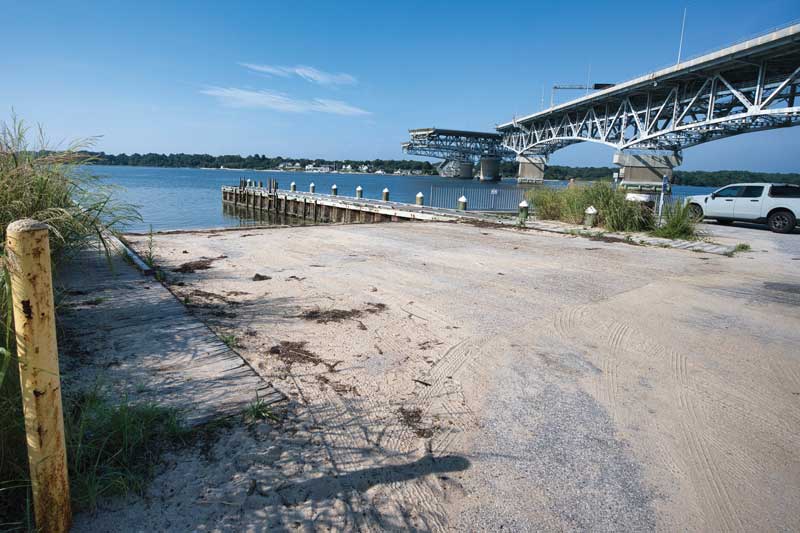
Heading downriver, to the east, the York grows much wider as it flows into the Chesapeake Bay. This is a place for seaworthy vessels. The south shore contains the Coast Guard Training Center. Further on the north and south shore are lined with wetlands. These are excellent places to fish for seatrout and redfish. At the mouth of the river, you can tangle with larger game, such as cobia.
Boaters who want to access the York can start with the public ramp at Gloucester Point. The aforementioned Gloucester Point Park has a concrete ramp that is well suited for a variety of vessels. The current under the bridge can be extremely powerful, so caution is advised. The adjacent beach, picnic area, and fishing pier are a bonus. Gloucester County has additional ramps, but many are suited for small vessels and paddle craft.

You can plan your visit by checking the Virginia State Parks website (dcr.virginia.gov/state-parks), Colonial National Historical Park (nps.gov/colo/index.htm), or the Visit Yorktown website (visityorktown.org).
By Kendall Osborne
Upcoming Events in Yorktown:
For more details and events, check out the Yorktown calendar.
- Rhythms on the Riverwalk Concert Series: September 4, 11, 18, 25 and October 2 and 9 (Thursdays from 6:30 to 8:30 p.m.)
- Yorktown Market Days: Saturdays through September 27 from 8 a.m. to 12 p.m. (and select Saturdays October to December)
- Yorktown Wine and Oyster Festival: October 4-5
- Yorktown Victory Celebration: October 18
- Yorktown Day: October 19
- Yorktoberfest: October 26
Getting Around Yorktown
The Yorktown Trolley is one of the best ways to see Historic Yorktown. It alleviates the hassle of finding parking close to the waterfront, especially during peak tourist season and during special events. This free air-conditioned (and heated) service will take you from the Yorktown Battlefield Visitor Center all the way to the American Revolution Museum at Yorktown, making several convenient stops along the way including Yorktown Beach and Riverwalk Landing. Each trolley is ADA accessible, and service dogs are allowed onboard. Hours are 10 a.m. to 5:30 p.m. through September 1 and 11 a.m. to 5 p.m. September 2 through November 16 (daily). For a map of stops, details on tracking the trolley, and more, click to visityorktown.org/260/Trolley-Parking.